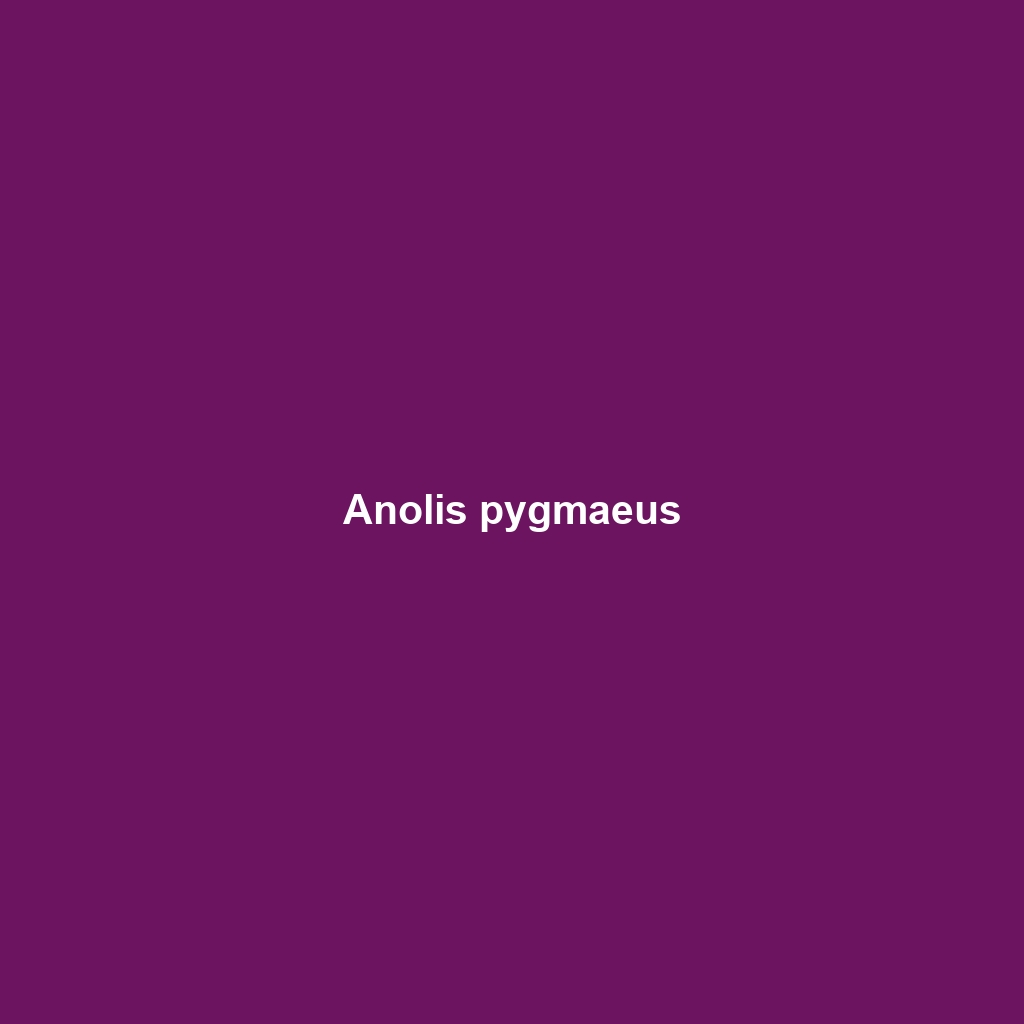Anolis pygmaeus: A Detailed Species Description
Common Name: Anolis pygmaeus
Scientific Name: Anolis pygmaeus
Habitat
Anolis pygmaeus, commonly known as the pygmy anole, is primarily found in the lush tropical forests of Central America, particularly in countries such as Panama and Costa Rica. This small lizard typically inhabits humid environments, often dwelling in the understory of rainforests. It favors areas with abundant foliage, where it can bask in the sun while remaining hidden from predators.
Physical Characteristics
Anolis pygmaeus is a diminutive lizard measuring approximately 3 to 4 inches in length, making it one of the smallest members of the anole family. Its coloration varies depending on the individual and environment, ranging from vibrant greens to subtle browns. The lizard’s slender body and long tail aid its agility, while its distinctive dewlap—a flap of skin under the throat—can expand in males, displaying colorful markings during mating rituals.
Behavior
Diet
The diet of Anolis pygmaeus primarily consists of small insects and invertebrates, including ants, flies, and spiders. As an insectivore, this lizard plays a crucial role in controlling pest populations within its habitat. Its foraging habits involve ambush techniques, where it waits for prey to approach before darting out to capture it with quick strikes.
Reproduction
Anolis pygmaeus exhibits seasonal breeding, typically taking place during the warmer months when food resources are abundant. Males engage in elaborate courtship displays to attract females, which involve both visual displays and vocalizations. After mating, females lay one to two eggs in moist, hidden locations, which hatch approximately four to six weeks later, giving rise to fully formed, miniature versions of adults.
Conservation Status
Currently, Anolis pygmaeus is classified as vulnerable due to habitat loss caused by deforestation and development. The destruction of its natural habitat poses a significant threat to its population, emphasizing the need for effective conservation strategies to ensure its survival.
Interesting Facts
A fascinating aspect of Anolis pygmaeus is its exceptional ability to change its color to blend seamlessly with its environment, a trait that aids in both camouflage and thermoregulation. Additionally, despite its small size, this lizard has adapted well to its ecological niche, demonstrating interesting behavioral adaptations that parallel larger anole species.
Role in Ecosystem
Anolis pygmaeus plays a vital role in its ecosystem as both a predator and prey. By controlling insect populations, it helps maintain the balance of its habitat. Furthermore, it serves as a food source for various predators, including birds and snakes, thus contributing to the overall food web dynamics of the rainforest ecosystem.
